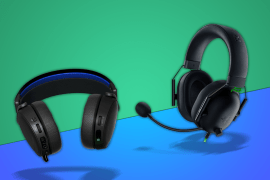Microsoft Xbox Series S review: Three years with the little Xbox that could
Is Microsoft's other next-gen console worth your time?
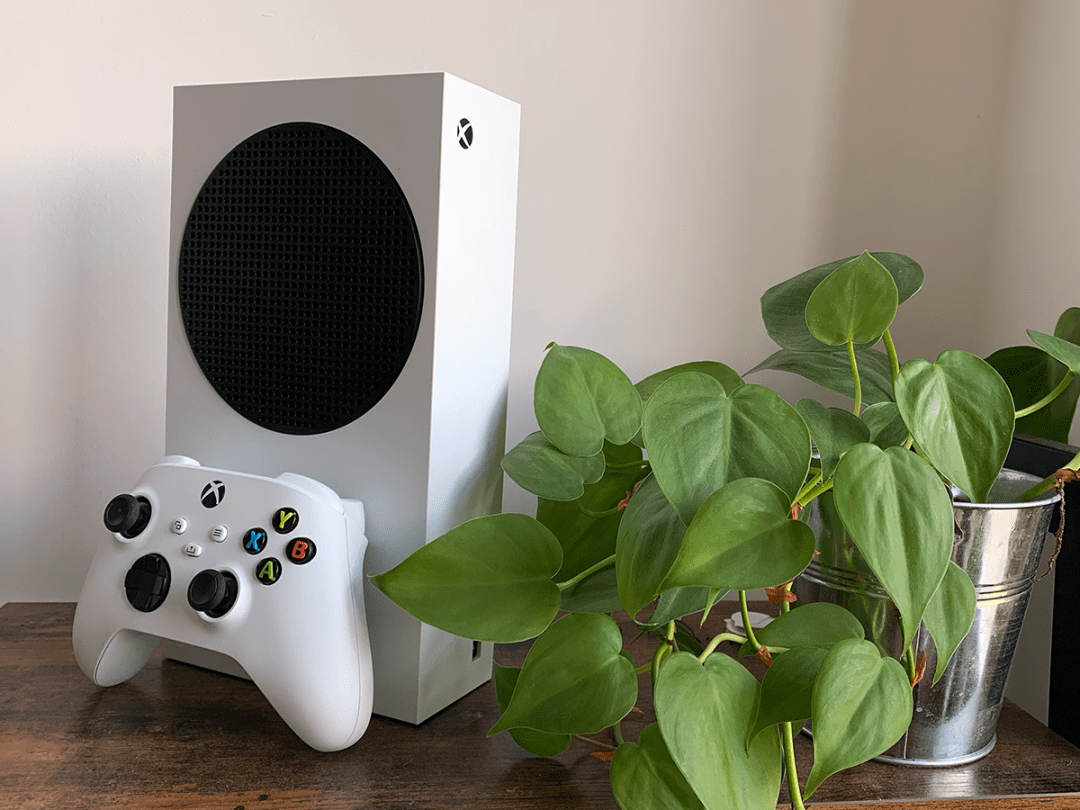
Stuff Verdict
The Xbox Series S delivers affordability without compromising too much on features, and with Game Pass it’s the best deal in gaming
Pros
- An affordable but legitimate next-gen upgrade
- Lightning fast performance
- Xbox Game Pass represents one hell of a deal
Cons
- A lack of true next-gen launch titles
- 512GB SSD won’t go the distance
- Compromised visuals
Introduction
Microsoft pitched its Xbox Series X as the most powerful console ever, but where does that leave the plucky Series S? It might be tempting to think the company’s other next-gen console has been left to play second fiddle to its teraflop-laden sibling, but that would be a huge mistake.
Despite its diminutive stature and more conservative tech specs, the Series S still feels like a genuine, generational leap forward. It’s sharper, faster, and more refined than its predecessors, and offers a meaningful alternative to the mammoth Series X.
After spending nearly three years with both machines, we’ve been surprised at just how much we’ve used the little Xbox, even with its bigger brother looming over it from another room. You have to be willing to live with some concessions, but armed with Game Pass, the all-digital Series S is probably the best deal in gaming.
Review originally published November 2020
How we test gaming hardware
All games consoles and gaming hardware tested on Stuff are put through their paces with days’ worth of play time. We use our years of testing experience to judge areas such as build quality, software experience, battery life and other features. Manufacturers have no visibility on reviews before they appear online, and we never accept payment to feature products.
Find out more about how we test and rate products.
Design: Stone cold killer
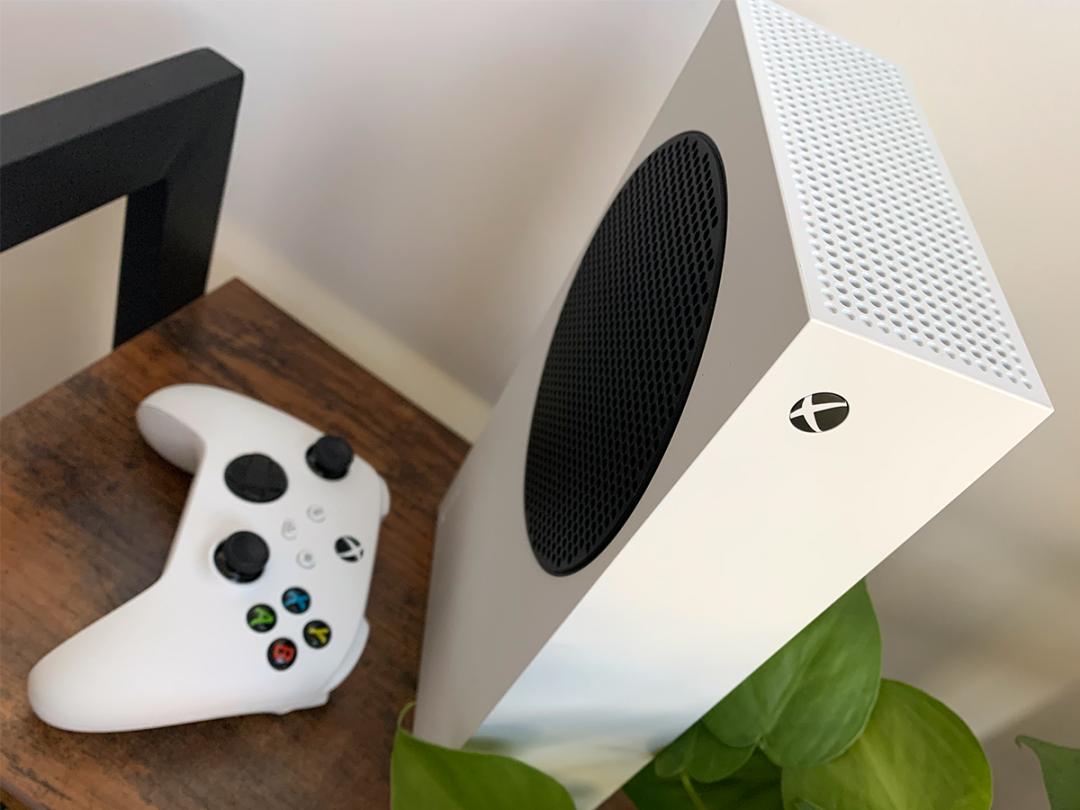
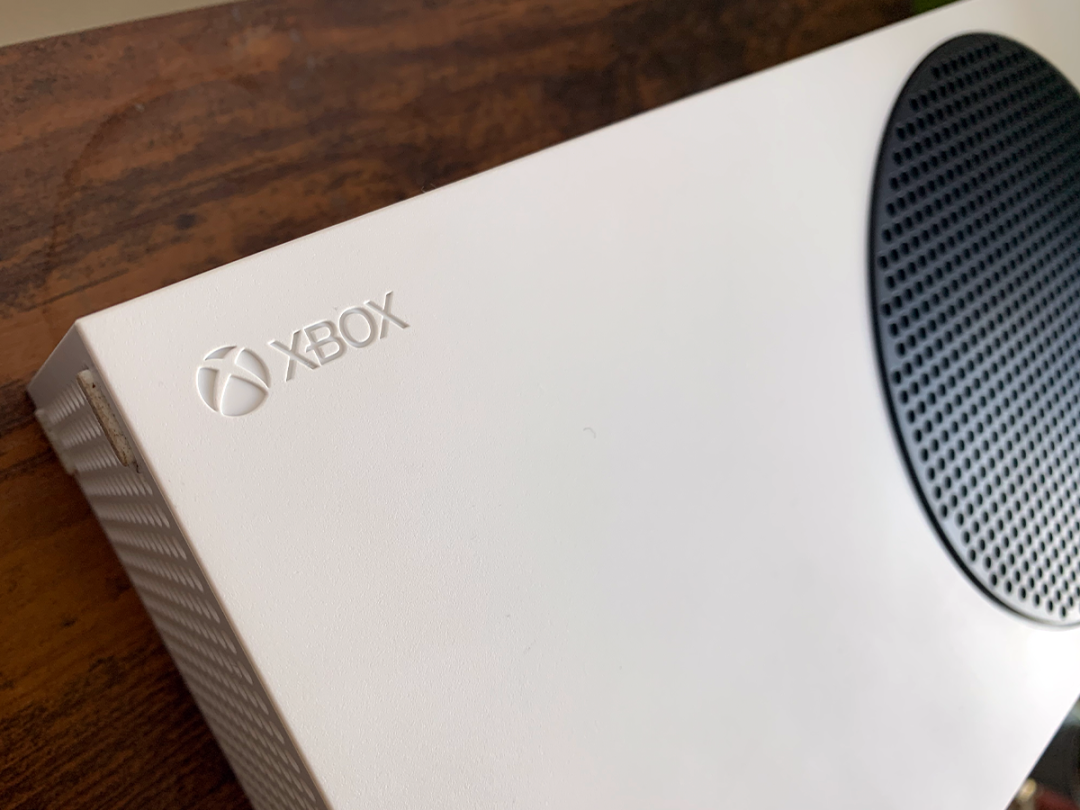
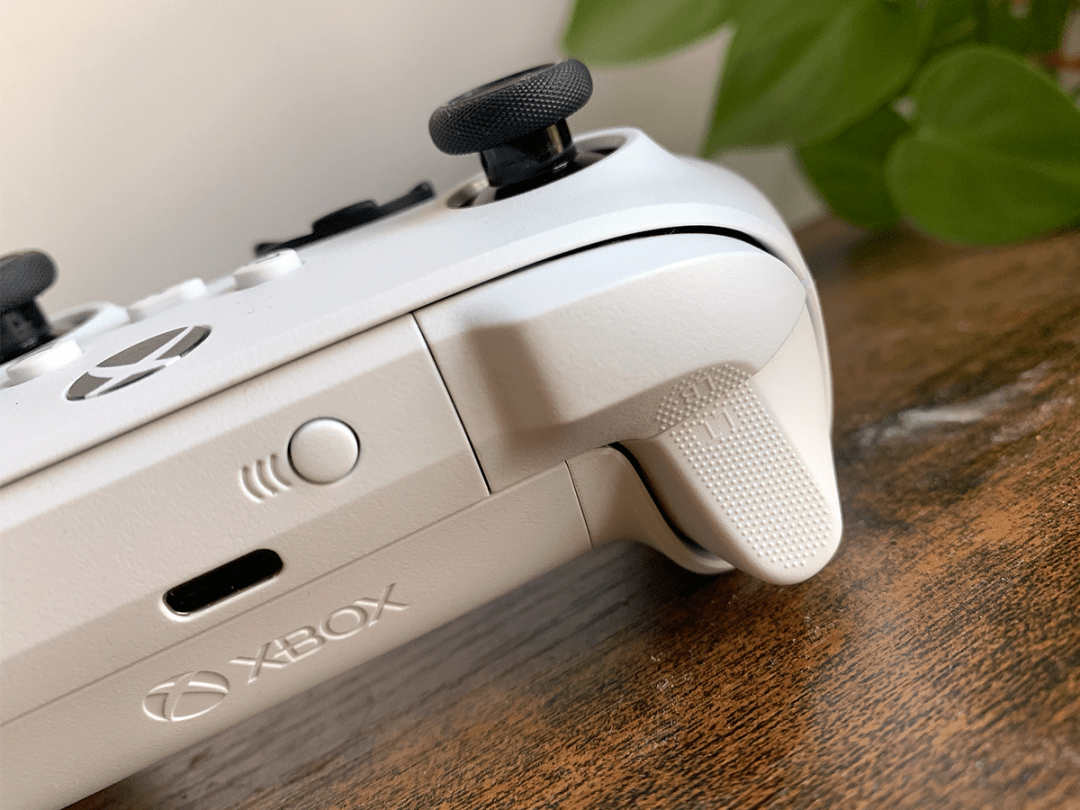
Alright, cards on the table. When the Series S was first unveiled we thought it looked tacky at best, and at worst like one of those juddering drive-thru speakers hidden behind a Wendys. It’s not often we say the words “we were wrong,” but gather around because we’re going to whisper them now: up close, the Series S is the definition of sophisticated.
In fact, if looks could kill, the Series S would have us six feet under. Everything about the console drips with understated class: the robot white finish, the weirdly captivating air vent, and the minimalist shell that defies logic and somehow manages to make the humble cuboid, dare we say it, sexy. Indeed, if the Series X is the brains-meets-brawn Oxbridge rowing champion, then the Series S is the understated rockstar with a twinkle in their eye.
Microsoft has recently launched an all black version of the console, which is much more in keeping with the Series X’s design. It’s not as striking as the original model, but if you prefer your tech not to stand out from the other various black boxes under your telly then you might prefer it. The bigger reason to go for the mid-gen refresh is storage. The original model shipped with a measly 512GB SSD (with only 364GB being useable), which disappears remarkably quickly once you start loading it up with the Forzas and Starfields of this world. The new black model doubles that to 1TB, which means you might be able to get by without investing in the various expandable storage options on the market, especially if the Series S is predominantly an indie machine.
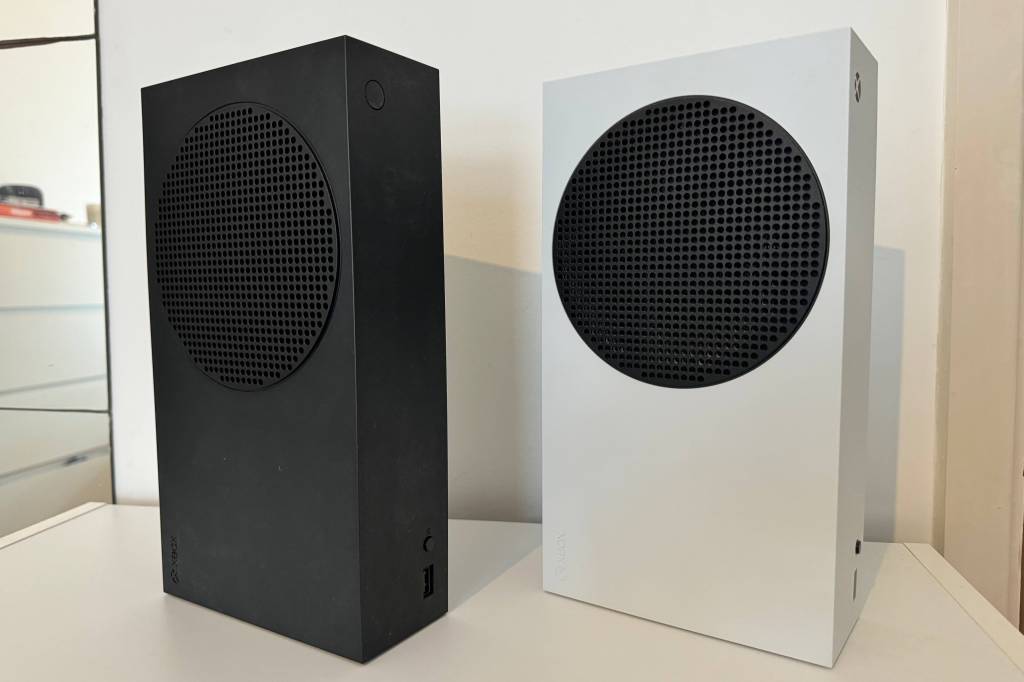
Regardless of colour, the Series S should emerge as the firm favourite for folks who don’t live in a chateau. For starters, it’s light. Like, really light. The Series S weighs just 4.25lbs, making it significantly lighter than the Series X (9.8lbs) and its forbears the Xbox One X (8.14lbs) and Xbox One S (6.4lbs). It’s also relatively compact, measuring in at 6.5cm x 15.1cm x 27.5cm, and should look right at home in even the most confined space whether led down horizontally or positioned vertically. Despite its hobbity demeanour, the console also has plenty of connectivity options in the form of three USB 3.1 Gen 1 ports, one HDMI 2.1 port, and an Ethernet port.
Those less-is-more design sensibilities carry over to the reworked Xbox Wireless Controller, which according to Microsoft has been “fined-tuned for performance” with the addition of a new share button, textured triggers, bumpers, and grips, and a full circle multi-directional D-pad. In reality it’s a case of more of the same, and while it’d be easy to accuse Microsoft of lacking inspiration here, sometimes the saying ‘if it ain’t broke’ really does hold water. The Xbox One pad is still one of the best around, and with a few subtle changes Microsoft has made some marginal but significant gains.
Performance: Fast and Furious
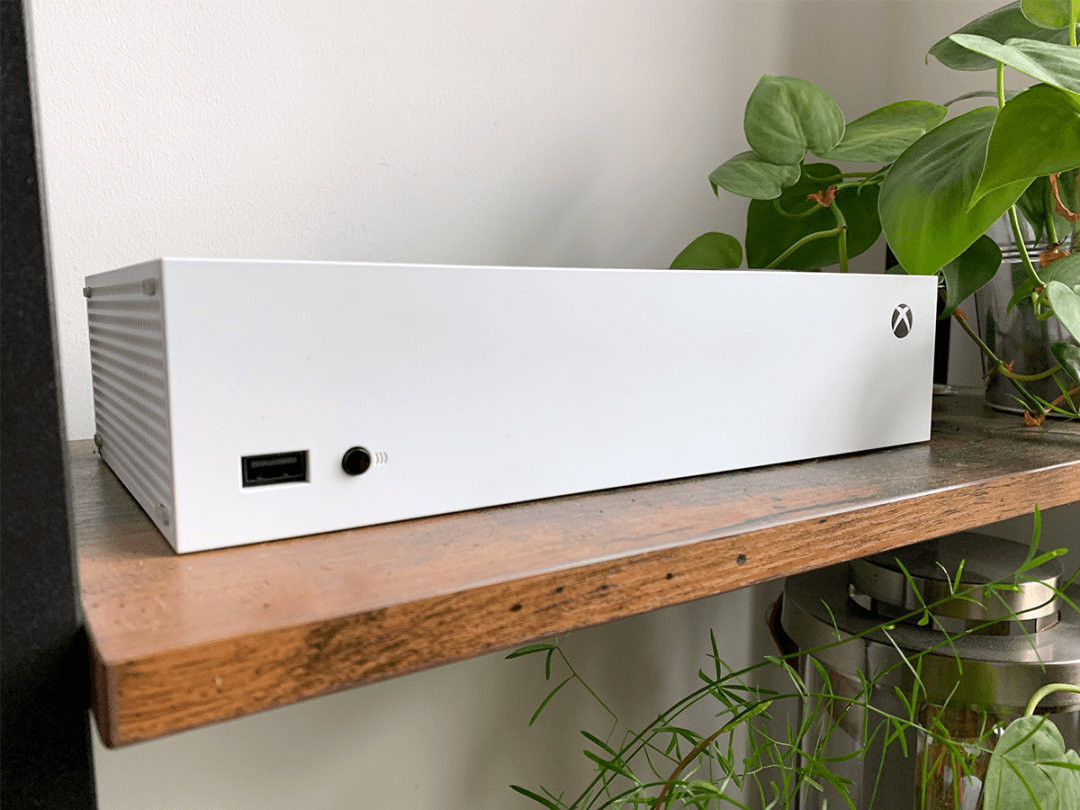
As with the Series X, the most tangible benefits of the Series S are immediately obvious. Both consoles utilise a Custom NVME SSD in combination with the all-new Xbox Velocity Architecture to get things done in super-quick time. In short, that means faster loading times, steadier frame rates, and impressive quality of life features like Quick Resume, which suspends game state data on the internal SSD to let users hop between multiple titles in a snap – similar to how you might leaf through apps on a smartphone. Just like its monolithic sibling, the Series S also supports DirectX raytracing, variable rate shading, spatial audio, and frame rates of up to 120fps, so you won’t be missing out on all that if you opt for the minature console.
Quick Resume in particular is a revelation. The feature dropped us in the middle of a Gears 5 set piece within 10 seconds of booting up the console, letting us mow down locust (or whatever they’re called these days) before we’d even parked ourselves on the couch. By comparison, it took the launch Xbox One around 30 to 40 seconds to complete similar tasks. It’s the same story when switching between games, with Quick Resume letting us zip between supported titles like a digital whack-a-mole. If you’re the sort of person who likes to chop-and-change during sessions, trust us when we say Quick Resume will be a genuine revelation.
Those nimble innards, which are powered by a custom designed processor leveraging AMD’s latest Zen 2 and RDNA 2 architectures, also turned loading screens into blink-and-you’ll-miss-them affairs. We spent a fair bit of time with a range of triple-A titles including Doom Eternal, Forza 7, and Watch Dogs Legion, and we can’t recall ever twiddling our thumbsticks for more than a few seconds. This was particularly noticeable in Doom Eternal, where restarting a level or checkpoint after being pulled apart by demons was near-instantaneous.
It’s the same story for backwards compatible games, all of which have been given a facelift thanks to the automatic addition of HDR and reduced load times. There are a bevy of backwards compatible titles available on the Series X and Series S on day one – thousands, in fact – and the Series S made revisiting old favourites like Mass Effect and Alan Wake an absolute pleasure. Nostalgia has never looked this good.
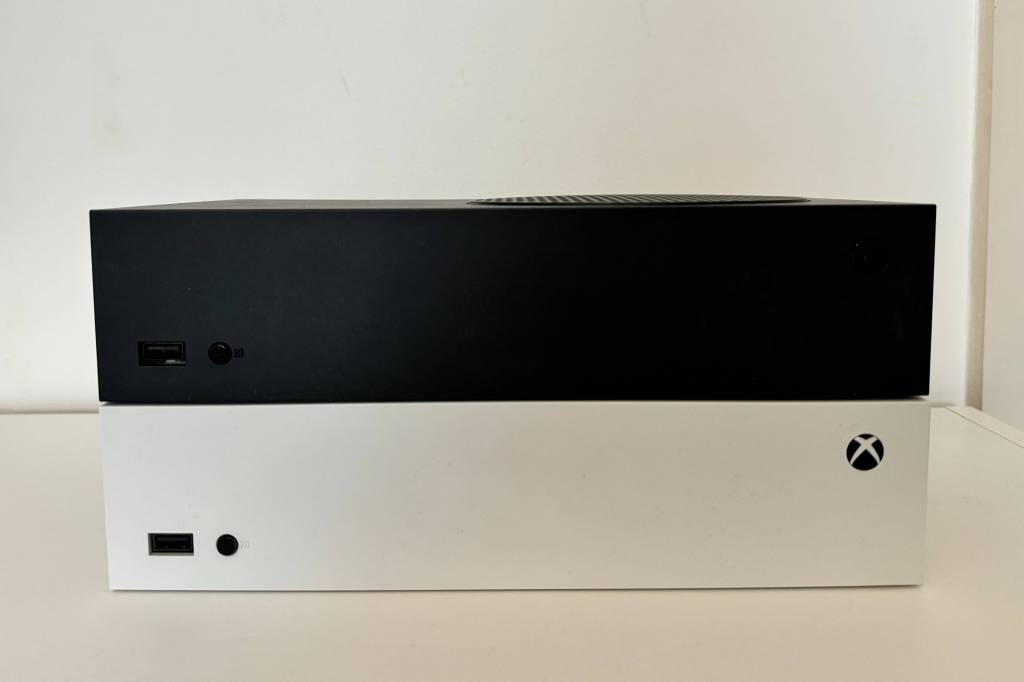
While all of those games looked undeniably gorgeous when running on the Series S, if you’re going to buy the compact console then be prepared to shelve your 4K dreams. One of the key differences between the Series S and the Series X lies in resolution, and while the top-end Series X targets 4K at 60fps with support for up to 120fps, the Series S generally chases 1440p at 60fps with support for up to 120fps – although it is capable of rendering at native 4K if a developer chooses to implement support, and will also upscale when connected to a 4K TV.
What does all of that resolution jargon mean in practise? In short: it means you’ve got a decision to make. If you don’t own a 4K television or simply don’t fancy forking out another £200 for the privilege of 4K gaming, then the Series S might very well be the answer to your next-gen prayers. If, however, you are chasing true 4K euphoria, then the Series X is your salvation.
As this generation has rolled on, it has proved to be the case that even the PS5 and Xbox Series X have struggled to maintain performance levels in games running at a high resolution, and the Series S is also a mixed bag. It’ll vary by game, but if you intend to play all the modern AAA releases on the smaller Xbox, you should manage your expectations. As an example, we recently reviewed Assassin’s Creed Mirage on the Xbox, alternating between the Series X and S, and while it’s generally a pretty handsome-looking game on both machines, the former fared a lot better in the 60fps-targeting performance mode. After some pretty severe screen tearing and noticeably softer image quality, we tended to stick with the 30fps quality mode on the Series S. Sometimes the little guy just can’t hack it.
Games: Game Pass is the key

Consoles are nothing without games, so it’s fortunate the Xbox Series S has plenty. If you’re a Xbox Game Pass subscriber, you’ll get immediate access to the same titles you were playing on your Xbox One. That means once you’ve plugged the Series S in and jumped through a few administrative hoops, you can chow down on over 100 titles, including major Xbox Games Studios franchises like Gears of War, Halo, and Sea of Thieves.
Microsoft uses something it calls Smart Delivery to ensure that consumers only have to buy supported titles once. Say, for instance, you purchased Assassin’s Creed Valhalla for your Xbox One and then upgraded to a Series S/X later on, you’d gain instant access to the title on your next-gen whippersnapper for no extra cost. It’s a neat initiative that unifies the Xbox ecosystem, and one we’ve already used to play Watch Dogs Legion on every Xbox in our house.
As for how those current-gen titles will attempt to squeeze every bit of juice out of the new hardware, some of the heavy hitters are being issued with ‘Optimized for Xbox Series S|X’ updates that reduce load times, bump frame rates, and usher in graphical improvements. We’ve spent hours with the Optimized version of Gears 5, and the difference is undeniably impressive. It’s worth bearing in mind, however, that Optimized updates aren’t rolled out across the board.
The early months of the Xbox Series X|S were pretty underwhelming, with Microsoft’s decision not to release any next-gen exclusive games at launch resulting in a generational leap that felt more like a polite hop. Nearly three years into the life cycle of the consoles, things have definitely picked up, and this year in particular has been a good one for Game Pass subscribers.
Hi-Fi Rush came out of nowhere at the beginning of the year and made a very good impression, and Starfield, while perhaps not the critical smash hit Microsoft hoped it would be, is still a hell of a freebie. This week you can download the rebooted Forza Motorsport at no extra cost with Game Pass. Factor in the abundance of indie games that hit the service on day one, with the likes of Cocoon and Sea of Stars being a few recent standouts, and there’s a lot for Xbox gamers to tuck in to.
In the next few years we should see all those studio acquisitions start to pay off even more, and the Xbox Series S is the cheapest way for players to benefit.
Interface: The same, but different
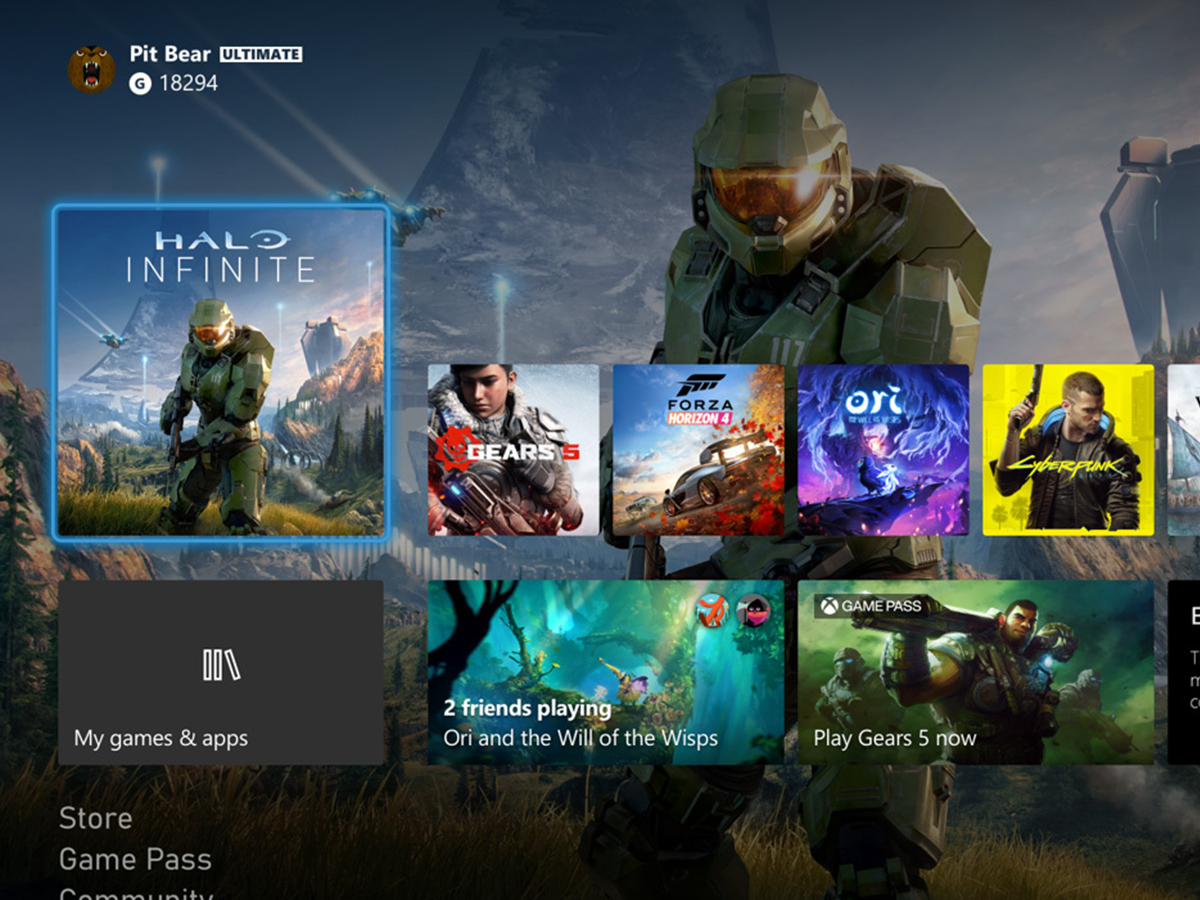
Much like the Series S itself, the re-tuned Xbox user interface is all about speed. Microsoft claims the ‘new Xbox experience’ (their words, not ours) will be faster to use, more approachable, and visually appealing, and in our experience it ticks all of those boxes with aplomb. Accessing the Microsoft Store, Game Pass, and your installed apps and games happens in a flash.
The Home screen now loads more than 50 percent faster when booting up the Xbox, and is almost 30 percent faster to load when dipping out of the game. App launch time has been cut to around two seconds, while navigation has also been streamlined to make finding specific information quicker and easier. Dynamic backgrounds bring some visual flair to proceedings, and offer a few light customisation options. Despite those various quality of life improvements, the interface also uses 40 percent less memory than was previously required, giving a pretty clear indication of just how well Microsoft has managed to refine its minimalist UI.
It’s hard to parse how all of that actually feels until you’re sat down with the Series S, so we’ll just say that going back to the launch Xbox One after familiarising ourselves with the Series S felt like taking the Bugatti Chiron for a test drive before chuntering home in a Fiat Punto.
The Xbox mobile app also works flawlessly, and can be used to easily set up your new console, access different devices, check the status of installs, initiate downloads, send messages to friends, launch parties, and manage and share screen and video captures. It’s evident Microsoft wants to deliver a seamless user experience that mirrors its cross-generation, ‘play anywhere’ approach to gaming, and while it’s still early doors, it looks to be right on track.
Microsoft Xbox Series S Verdict
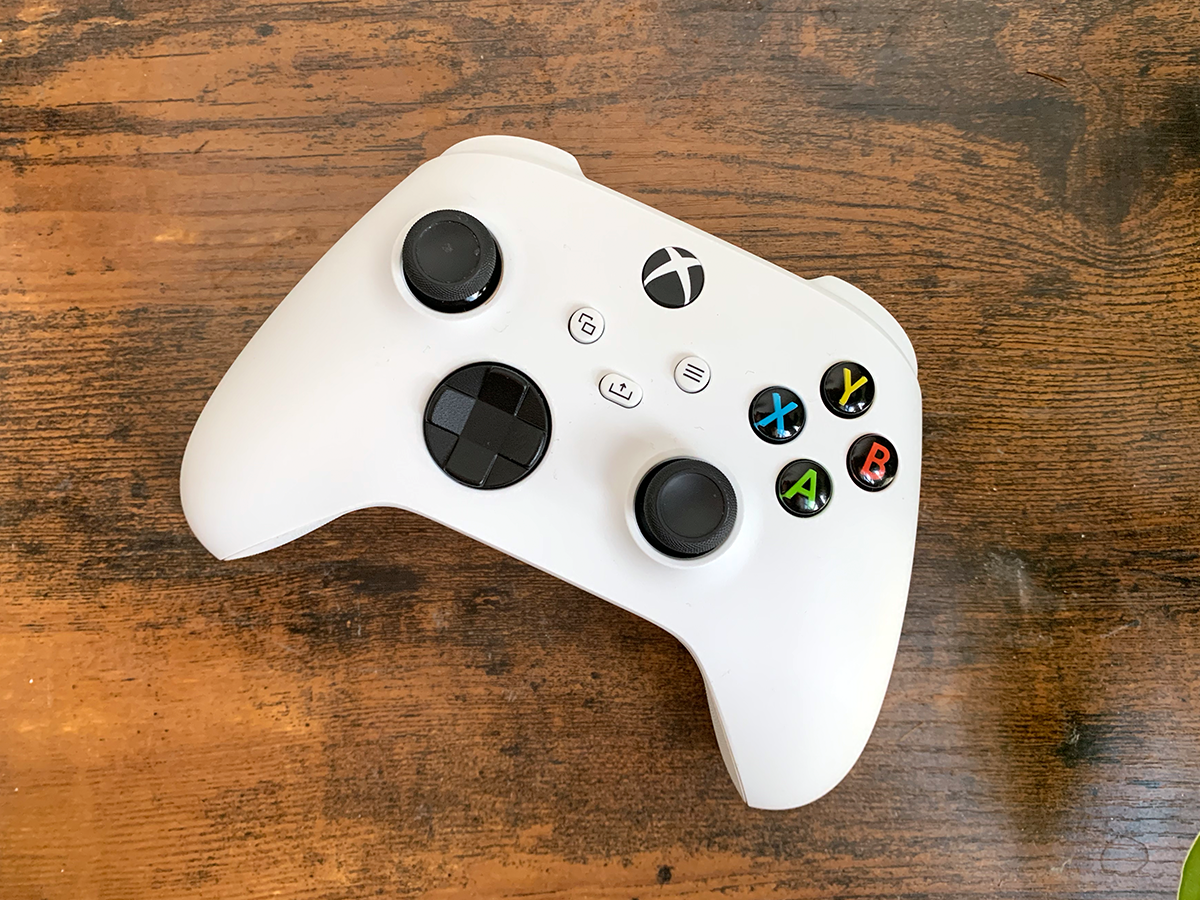
The Xbox Series S is a next-gen console in almost every sense, but more than that, it’s a next-gen console that won’t price anybody out. Yes, you’re not going to get the ultimate 4K/60fps experience that the beefier Xbox can deliver, and you should know that going in, but brilliant features like Quick Resume, Smart Delivery and backwards compatibility with previous Xbox generations are all here, even if the latter is a digital-only proposition on the Series S. The option of a 1TB machine out of the box also fixes one of our main gripes with the base model.
Affordability also means accessibility, and the Xbox Series S combined with Xbox Game Pass has made next-gen gaming more readily available than ever before. This is a console genuinely made for everybody, and there can be no higher praise than that. And keep on eye on an upcoming high-profile sale that we don’t dare mention just yet, as the Series S is often discounted just before the festive season kicks off.
Stuff Says…
The Xbox Series S delivers affordability without compromising too much on features, and with Game Pass it’s the best deal in gaming
Pros
An affordable but legitimate next-gen upgrade
Lightning fast performance
Xbox Game Pass represents one hell of a deal
Cons
A lack of true next-gen launch titles
512GB SSD won’t go the distance
Compromised visuals




